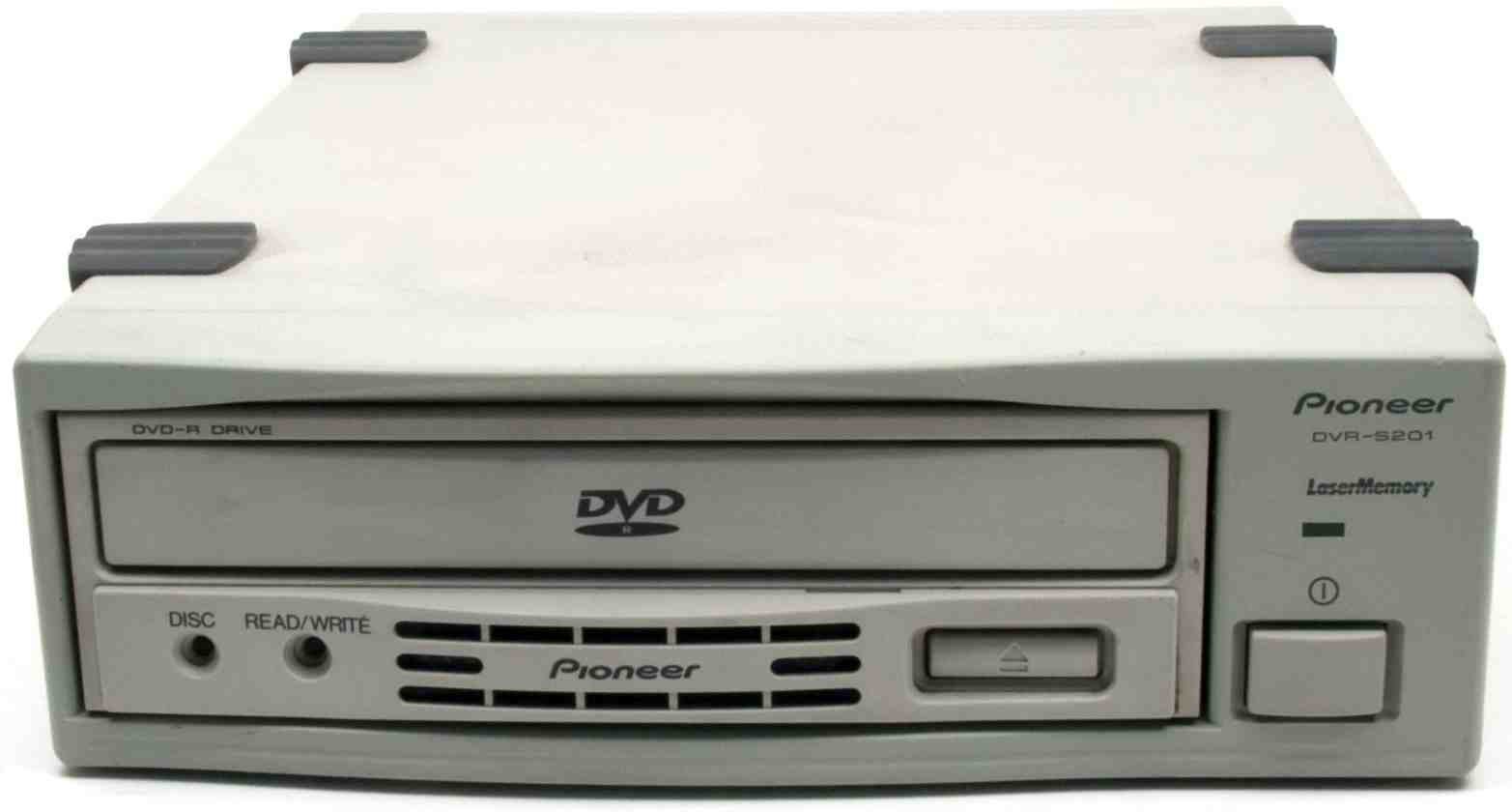 I had a clear-out recently. The room at work affectionately known as the “Technology Graveyard” was bursting to the seams and it was time to reclaim some real estate.
I had a clear-out recently. The room at work affectionately known as the “Technology Graveyard” was bursting to the seams and it was time to reclaim some real estate.
Amongst the endless carcasses of PCs and Macs, semi working monitors and mysterious 19″ rack mounted boxes with names like “Finalizer” there was a piece of history that brought back many memories. The 4 units had fairly recognisable form factors -a rectangular box in a beige cream colour that has become shorthand for “hi-tech, functional, not sexy”. The rear of the box featured some laughably clunky SCSI ports and a standard 3 pin mains socket. No clues here. The front however was far more familiar, with a fairly recognisable optical disc tray and eject button. To the right was a substantial power button and just above this a very retro looking logo proclaiming “LaserMemory”. It looked like something that Hans Solo might have carried with him on his adventures – substantial and exuding power but yet painfully dated and retro, not quite steam punk but maybe “diesel raver”. The biggest clue however was printed neatly in the middle of the drive’s tray – a screen printed logo proudly proclaiming “DVD -R”. Just in case the purpose of the drive had not been made clear, the designers saw fit to add , in plain text, the words “DVD-R Drive” in the top left hand corner of the drive itself.
Yes, this was the first commercial DVD recorder the world had ever seen. At the time it caused a storm and it’s fair to say started the process that revolutionised the optical disc industry. It was designed to be used by DVD authoring companies to burn masters for replication and also to write check disc DVDs to quality control the authoring process.
As it was pitched at companies who thought nothing of spending £250k on a PC to create DVDs this unit was pitched at a fairly ambitious £3500. Yes, that is correct. More than 100 times the price of a current burner for a unit that wrote discs at a whopping 1X. It took over 40 minutes to burn 1 disc. And the discs weren’t cheap either, coming in at over £15 each (that’s an expensive coaster). There were no other options, so if you wanted to burn DVDs at the turn of the last decade you paid the price.
I was lucky enough to own a company that had the funds to purchase not one but four of these beasts and it formed the heart of our DVD duplication service. It was the most expensive DVD tower London had ever seen and it wrote 4 discs at once.
Nearly 10 years later we again bought the latest in optical disc technology, this time Blu-ray. The first BDR drive we bought cost over £200, less than 10% of the cost of the original DVDR burner. Using the drop in cost of the DVDR burner it follows that a BDR burner will soon be available for less than the cost of a Big Mac. Somehow I doubt that. It’s pretty obvious that the cost of Blu-ray recording technology is going to drop but the current evidence points to BDR being a far less pervasive format, destined to not only being overtaken swiftly by other optical (and possibly holographic) formats but also solid state memory. The meteoric rise of DVDR as the most ubiquitous recordable format on this planet is highly unlikely to be repeated in the near future. Certainly not by a format that will most likely be the last of the “Hans Solo” generation of 2D optical drives.


